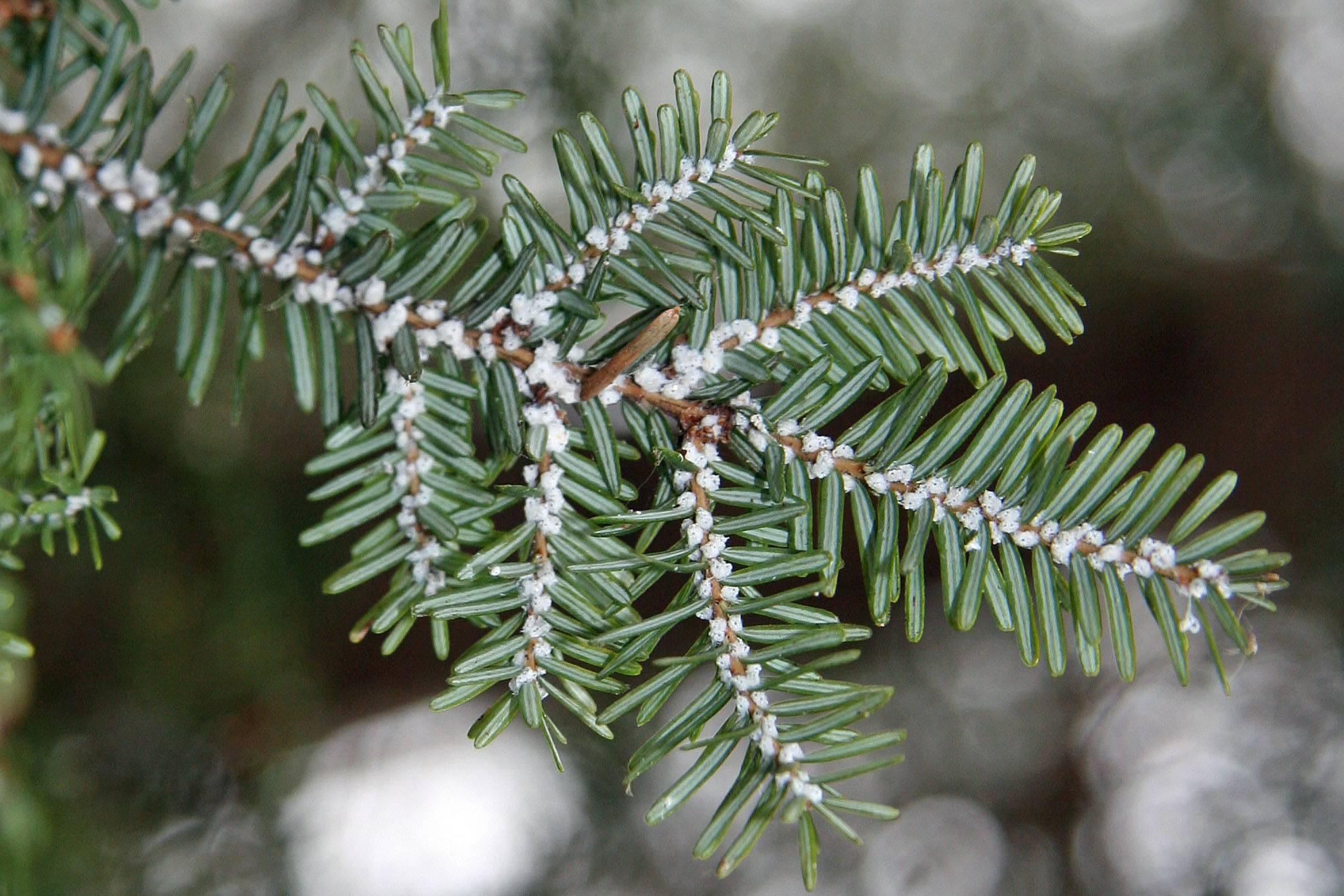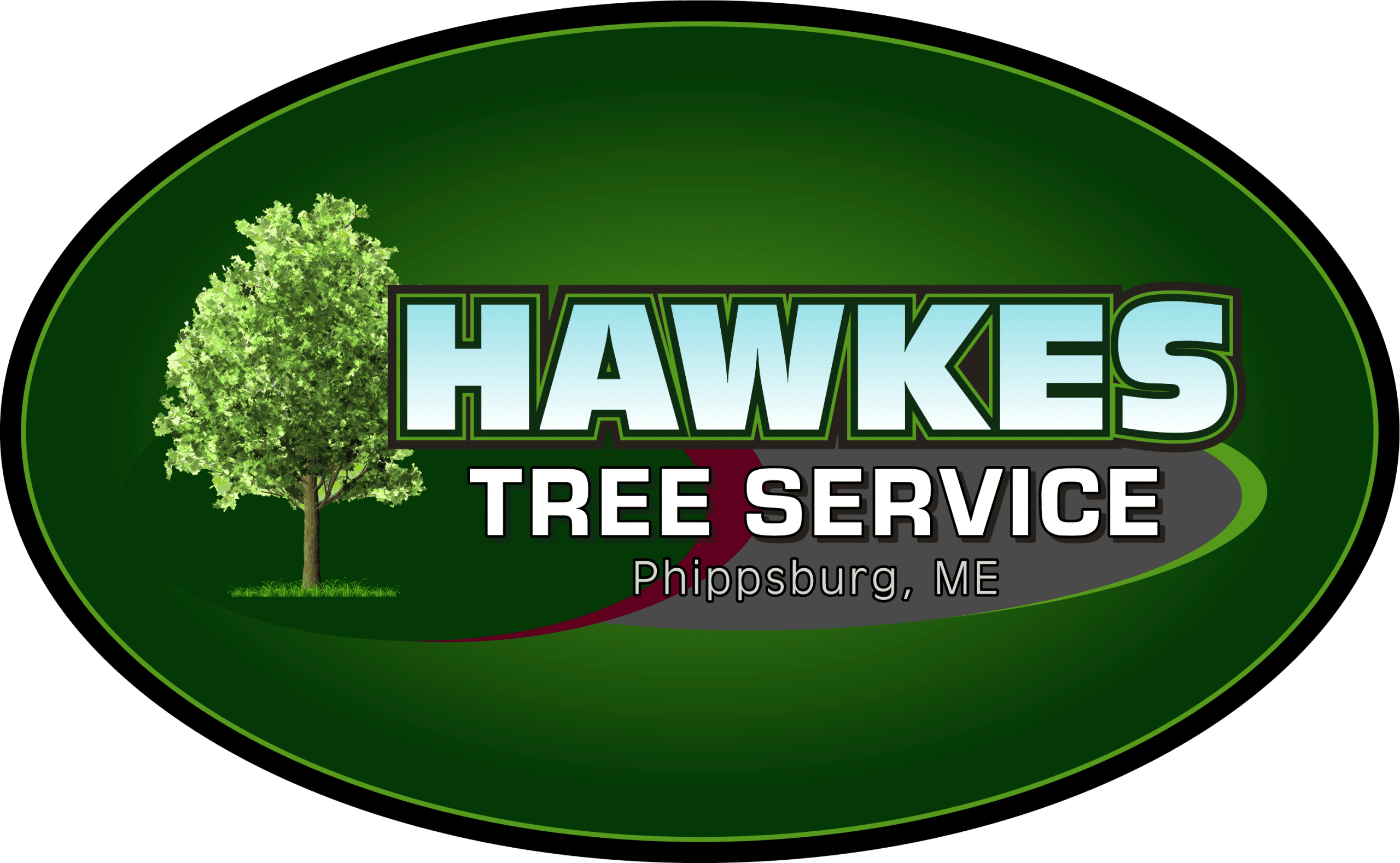Maine Hemlock Woolly Adelgid Control & Treatment Services
Hemlock Woolly Adelgid (HWA) is a non-native, sap-sucking insect that feeds on the needles of Eastern hemlock trees. First detected in the U.S. in the 1950s, HWA has since spread north into Maine, where it is currently found in coastal regions. These scale-like pests feed by extracting sap from hemlock needles and injecting a toxin that causes needle dieback. Infested trees often show needle loss starting from the lower branches and progressing upward. Over time, weakened hemlocks may become vulnerable to secondary pests, diseases, or even structural failure due to wind.
HWA has a unique life cycle with two overlapping generations per year. Adults lay up to 300 eggs from March to April, typically hidden within the insect’s distinctive white, woolly covering on the undersides of branches. By late April to May, the newly hatched crawlers begin feeding by inserting their piercing-sucking mouthparts into the needles. A second generation matures in June, producing another round of crawlers by July. These young insects feed until mid-summer, enter dormancy during the hottest weeks of August, and then resume feeding in the fall. As winter approaches, nymphs develop their woolly coating, which protects them until spring.

Hemlock Woolly Adelgid Treatment Options in Maine
At Hawkes Tree Service, we offer two proven methods for treating Hemlock Woolly Adelgid (HWA) infestations. The first is a systemic basal bark spray, which targets adelgids actively feeding on the tree. Timing this treatment to match key stages in the HWA life cycle is essential for achieving effective control.
The second option is a systemic soil injection, which is absorbed through the roots and translocated throughout the tree—delivering protection to the needles and other tissues. This treatment can protect your hemlocks for up to four years.
If you suspect HWA activity on your property, don’t wait. Contact Hawkes Tree Service for a free consultation and expert advice on how to protect your hemlock trees. We proudly serve clients throughout Midcoast Maine with professional, licensed pest control solutions.
Maine Guidelines for Hemlock Woolly Adelgid Control
The State of Maine enforces strict regulations on which pest control products and treatment methods can be used within 250 feet of the mean high-water mark. These guidelines are designed to protect the health of sensitive marine ecosystems and nearby habitats.
For properties located within this setback zone, Hawkes Tree Service recommends individual tree injections as the safest and most effective Winter Moth treatment. Systemic soil injections deliver a small volume of product into the root flare zone, where it’s absorbed by fibrous root hairs and carried throughout the tree to developing leaves.
Trunk injections function similarly but are delivered directly into the tree’s vascular system through a small drilled opening at the base. A needle system injects the treatment, and the tree naturally draws it in along with water and nutrients. These injection sites are minimal and quickly seal over as the tree compartmentalizes the wound.
Because every property is unique, we tailor our Winter Moth treatment plans based on your site’s location and needs. Contact Hawkes Tree Service today for more information or to schedule a free consultation at (207) 442-7444.

